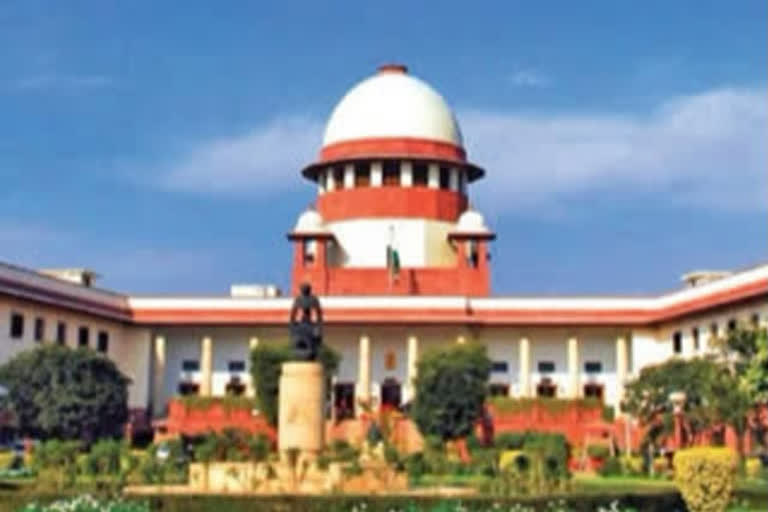New Delhi:The Supreme Court on Thursday posed searching questions to the Centre on its decision to fix a limit of rupees eight lakh annual income for determining Economically Weaker Sections (EWS) category for reservation in NEET admissions for medical courses.
The top court allowed the impleadment of the Ministry of Social Justice and Empowerment and Department of Personnel and Training and asked them to file an affidavit as on what was the basis for fixing the limit of Rs 8 lakh annual income to determine the EWS category.
The Centre said fixing a limit of Rs eight lakh annual income for the EWS category is a matter of policy based on the National Cost of Living Index.
A bench of Justices DY Chandrachud, Vikram Nath, and BV Nagarathna asked the Centre to specify what was the basis and parameters for fixing the limit and whether any deliberation has taken place on the issue or simply the figure of Rs eight lakh income was picked up from the limit of determining the creamy layer in the Other Backward Classes (OBC) category.
The top court was hearing a batch of pleas challenging the Centre and Medical Counselling Committee (MCC) July 29 notice providing 27 per cent reservation for Other Backward Class (OBC) and 10 per cent for EWS category in the National Eligibility cum Entrance Test (NEET) admissions for medical courses.
“We want to know what the basis for Rs eight lakh annual income is. What was the study behind this? Was there any deliberation? Can you say the Rs eight lakh limit is for all over the country? Every state and every state has a different cost of living. Cosmopolitan cities like Mumbai, Bangalore, and Chennai have different costs of living than cities in Uttar Pradesh or any other smaller city. How can the limit of Rs eight lakh be the same for every place in the country,” the bench said.
It asked whether the government has undertaken the study of the Gross Domestic Product of every household in a State and whether it has ascertained the criteria for economic backwardness and what its methodology was.
“Even for House Rent Allowance, you have a concept of Class-1 and Class-2 cities. How can you say Rs eight lakh will be applied for everywhere in the country. You cannot just say it is a matter of policy and get away with it,” the bench said.
The top court asked Additional Solicitor General KM Nataraj to reflect on the issue and to file an affidavit with regard to the questions asked by it and clarified that these questions are only its prima facie views.
“Economic Backwardness is a realistic thing. There is no doubt about it as people don't have money to purchase books, to even have food. But as far as the EWS is concerned, they are forward class and there is no social or educational backwardness among them. So can you apply the same yardstick of Rs eight lakh limit for the creamy layer to the EWS? Please remember, with regard to the EWS we are not dealing with social and educational backwardness. What was the basis of fixing the limit or have you simply lifted the criteria for the creamy layer and put it for EWS”, the bench said.
The top court said that it wants to know what exercise was undertaken to arrive at these indicia for EWS as it cannot apply the same indicia which have been applied for Social and Economically Backward Classes (SEBC).
